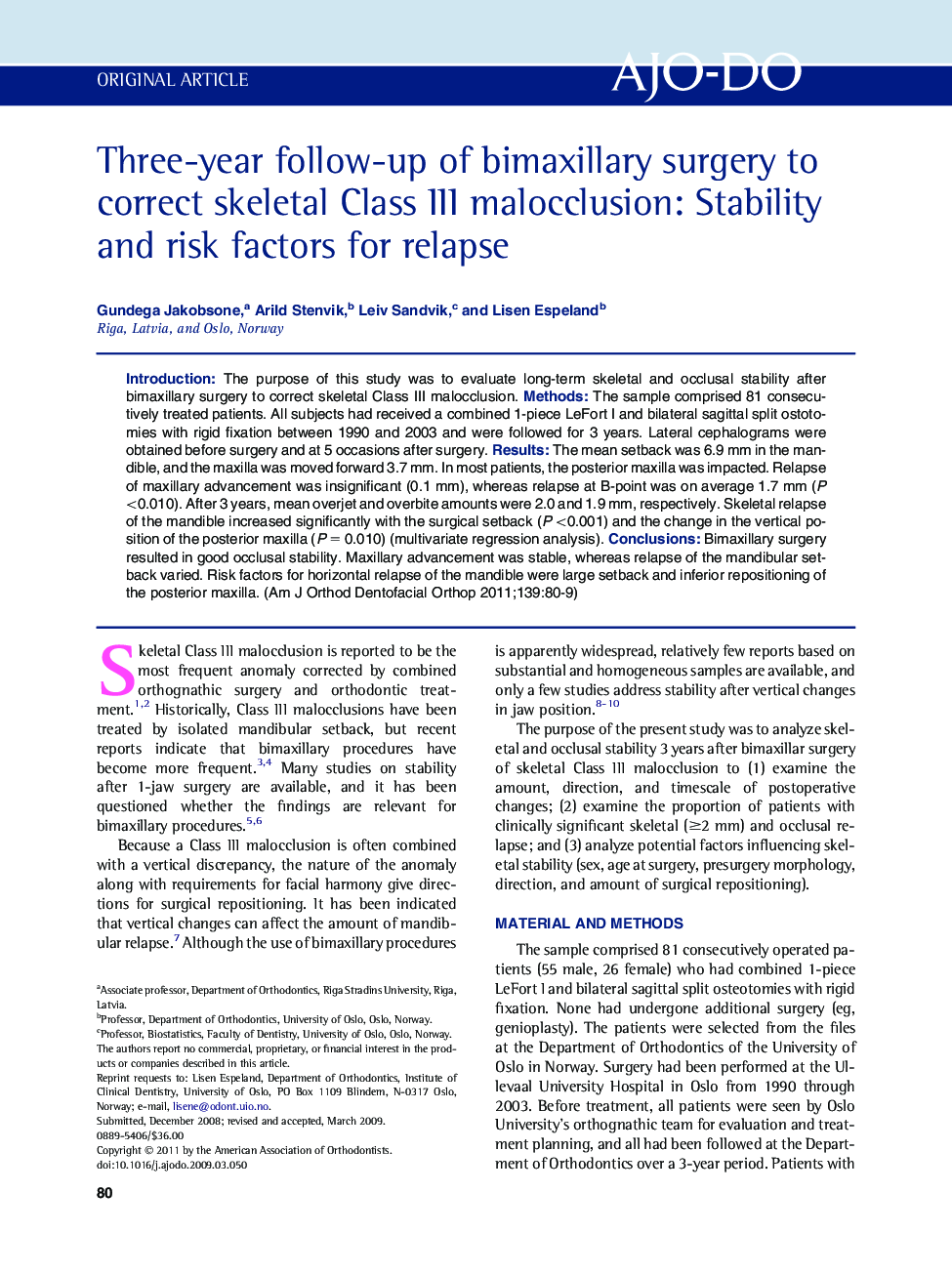| Article ID | Journal | Published Year | Pages | File Type |
|---|---|---|---|---|
| 3117339 | American Journal of Orthodontics and Dentofacial Orthopedics | 2011 | 10 Pages |
IntroductionThe purpose of this study was to evaluate long-term skeletal and occlusal stability after bimaxillary surgery to correct skeletal Class III malocclusion.MethodsThe sample comprised 81 consecutively treated patients. All subjects had received a combined 1-piece LeFort I and bilateral sagittal split ostotomies with rigid fixation between 1990 and 2003 and were followed for 3 years. Lateral cephalograms were obtained before surgery and at 5 occasions after surgery.ResultsThe mean setback was 6.9 mm in the mandible, and the maxilla was moved forward 3.7 mm. In most patients, the posterior maxilla was impacted. Relapse of maxillary advancement was insignificant (0.1 mm), whereas relapse at B-point was on average 1.7 mm (P <0.010). After 3 years, mean overjet and overbite amounts were 2.0 and 1.9 mm, respectively. Skeletal relapse of the mandible increased significantly with the surgical setback (P <0.001) and the change in the vertical position of the posterior maxilla (P = 0.010) (multivariate regression analysis).ConclusionsBimaxillary surgery resulted in good occlusal stability. Maxillary advancement was stable, whereas relapse of the mandibular setback varied. Risk factors for horizontal relapse of the mandible were large setback and inferior repositioning of the posterior maxilla.
